Tips for headache. Comprehensive Guide to Migraine Treatments: Abortive and Preventive Medications
What are the most effective migraine treatments available today. How do abortive and preventive medications differ in managing migraines. Which migraine drugs offer the best balance of efficacy and minimal side effects. When should patients consider preventive migraine medications versus acute treatments.
Understanding Migraine Headaches and Treatment Approaches
Migraine headaches are a debilitating neurological condition affecting millions worldwide. These intense headaches often come with additional symptoms like nausea, sensitivity to light and sound, and visual disturbances. Effectively managing migraines requires a comprehensive approach, utilizing both abortive (acute) and preventive medications.
How do migraines differ from regular headaches? Migraines are characterized by their intensity, duration, and associated symptoms. They typically last between 4-72 hours and can significantly impact a person’s daily life and productivity. Regular headaches, while uncomfortable, are generally less severe and shorter-lasting.

Abortive Migraine Medications: Stopping Attacks in Their Tracks
Abortive medications, also known as acute treatments, are designed to halt a migraine attack once it has begun or when symptoms first appear. These drugs work quickly to alleviate pain and associated symptoms, allowing individuals to resume their normal activities as soon as possible.
Triptans: The Gold Standard in Migraine Relief
Triptans are a class of medications specifically developed for migraine treatment. They work by targeting serotonin receptors in the brain, constricting blood vessels and reducing inflammation. Some common triptans include:
- Sumatriptan (Imitrex, Onzetra, Zembrace)
- Rizatriptan (Maxalt)
- Zolmitriptan (Zomig)
- Eletriptan (Relpax)
- Almotriptan (Axert)
- Frovatriptan (Frova)
- Naratriptan (Amerge)
Are triptans suitable for all migraine sufferers? While triptans are highly effective for many, they are contraindicated in individuals with certain cardiovascular conditions, uncontrolled hypertension, or a history of stroke. It’s crucial to consult with a healthcare provider to determine if triptans are appropriate for your specific situation.

CGRP Antagonists: A New Frontier in Migraine Treatment
Calcitonin gene-related peptide (CGRP) antagonists represent a newer class of migraine medications. These drugs work by blocking the action of CGRP, a protein involved in pain transmission and inflammation during migraine attacks. Examples include:
- Rimegepant (Nurtec)
- Ubrogepant (Ubrelvy)
- Zavegepant (Zavzpret)
CGRP antagonists offer an alternative for patients who don’t respond well to triptans or have contraindications to their use. They may also have fewer cardiovascular side effects compared to triptans.
Over-the-Counter Options for Mild to Moderate Migraines
For some individuals with milder migraines, over-the-counter (OTC) medications can provide sufficient relief. Common OTC options include:
- Ibuprofen (Advil Migraine)
- Aspirin + acetaminophen + caffeine (Excedrin Migraine)
- Naproxen (Aleve)
While these medications are readily available, it’s important to use them judiciously to avoid medication overuse headaches. How often can you safely use OTC pain relievers for migraines? Generally, it’s recommended to limit use to no more than 2-3 days per week to prevent rebound headaches and other complications.
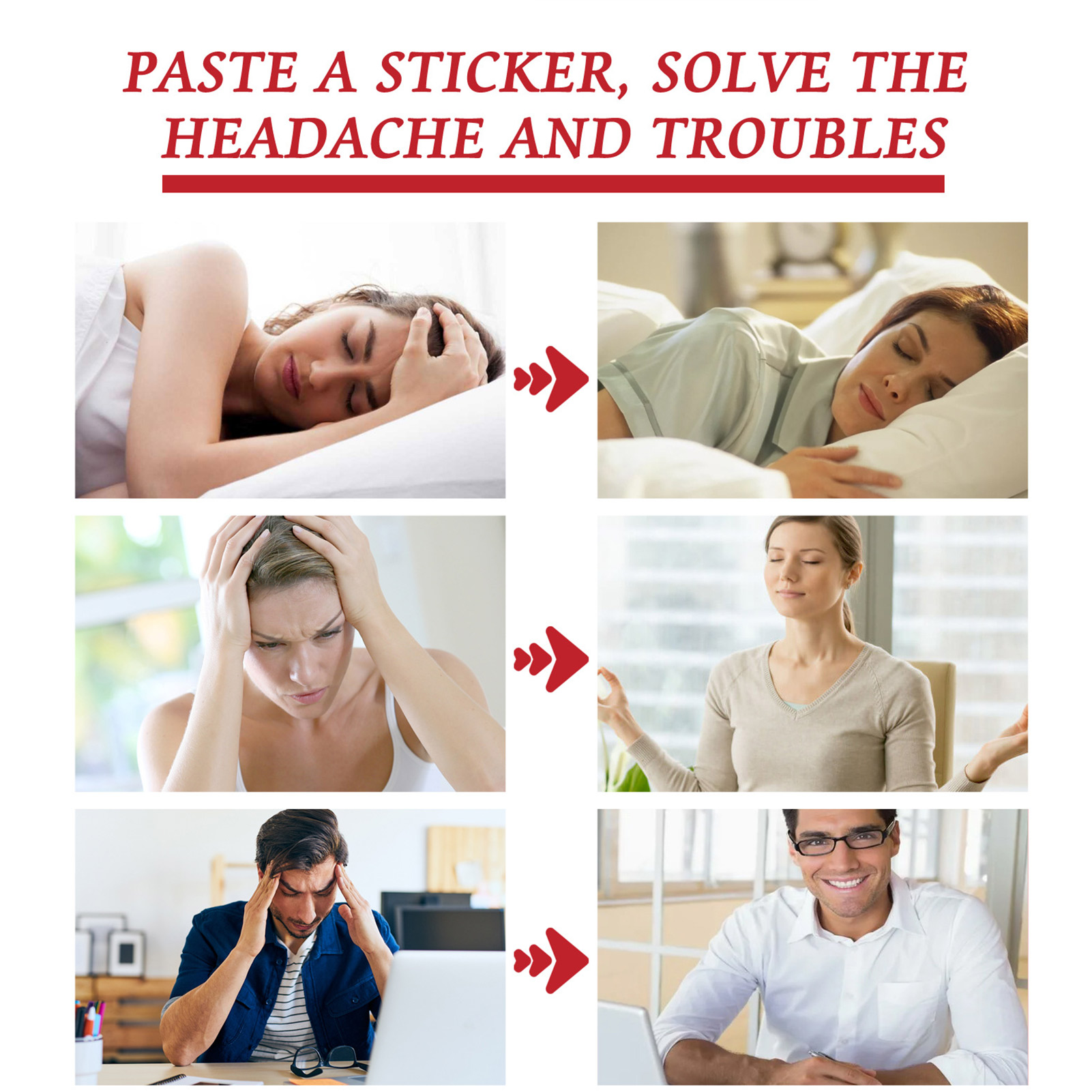
Preventive Migraine Medications: Reducing Frequency and Severity
For individuals experiencing frequent or severe migraines, preventive medications can be a game-changer. These drugs are taken regularly to reduce the frequency, severity, and duration of migraine attacks.
Beta-Blockers: A First-Line Preventive Option
Beta-blockers, typically used for hypertension, have shown efficacy in migraine prevention. Common options include:
- Propranolol
- Metoprolol
- Timolol
These medications work by reducing blood vessel dilation and decreasing nerve cell excitability in the brain. They are particularly useful for patients who also have high blood pressure or anxiety.
Anticonvulsants: Stabilizing Neural Activity
Certain anticonvulsant medications have proven effective in migraine prevention. The most commonly prescribed options are:
- Topiramate (Topamax)
- Valproic acid (Depakene)
These drugs work by stabilizing neural activity and reducing the excitability of brain cells that may contribute to migraine attacks. How long does it take for anticonvulsants to show effectiveness in migraine prevention? Patients typically need to take these medications for several weeks to months before experiencing the full preventive benefits.
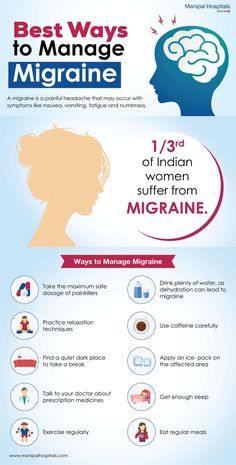
CGRP Monoclonal Antibodies: Long-Acting Prevention
A newer class of preventive medications targets the CGRP pathway through monoclonal antibodies. These drugs include:
- Erenumab (Aimovig)
- Fremanezumab (Ajovy)
- Galcanezumab (Emgality)
- Eptinezumab (Vyepti)
Administered via monthly or quarterly injections, these medications have shown promising results in reducing migraine frequency with minimal side effects. They represent a significant advance in migraine prevention, particularly for patients who haven’t responded well to other preventive options.
Combination Therapies: Maximizing Migraine Management
For some patients, a combination of abortive and preventive medications provides the most comprehensive migraine management. This approach allows for both immediate relief during attacks and long-term reduction in migraine frequency and severity.
Can abortive and preventive medications be used together safely? In most cases, yes. However, it’s crucial to work closely with a healthcare provider to develop a personalized treatment plan that balances efficacy and safety. Factors to consider include potential drug interactions, individual medical history, and specific migraine patterns.

Lifestyle Modifications to Complement Medication Therapy
While medications play a crucial role in migraine management, lifestyle modifications can significantly enhance their effectiveness. Some key strategies include:
- Maintaining a regular sleep schedule
- Managing stress through relaxation techniques or therapy
- Staying hydrated and maintaining a balanced diet
- Identifying and avoiding personal migraine triggers
- Incorporating regular exercise into your routine
How can patients effectively identify their migraine triggers? Keeping a detailed migraine diary that tracks potential triggers, symptoms, and medication use can be invaluable in pinpointing individual patterns and optimizing treatment strategies.
Navigating Side Effects and Medication Overuse
While migraine medications can provide significant relief, they may also come with potential side effects. Common side effects of abortive medications like triptans include:
- Dizziness
- Tingling or numbness
- Flushing
- Chest tightness or pressure
- Nausea
Preventive medications may have their own set of side effects, which can vary depending on the specific drug. It’s essential to discuss potential side effects with your healthcare provider and report any concerning symptoms promptly.

Medication overuse headache (MOH) is a significant concern for migraine sufferers. This condition occurs when acute medications are used too frequently, leading to an increase in headache frequency and intensity. How can patients avoid medication overuse headache? Generally, it’s recommended to limit the use of acute medications to no more than 2-3 days per week. If you find yourself needing acute treatments more frequently, it’s time to discuss preventive options with your healthcare provider.
Emerging Therapies and Future Directions in Migraine Treatment
The field of migraine treatment is continually evolving, with researchers exploring new therapies and refining existing ones. Some promising areas of research include:
- Neuromodulation devices that use electrical or magnetic stimulation to alleviate migraine pain
- Gene therapy approaches targeting specific migraine-related genes
- Advanced imaging techniques to better understand migraine pathophysiology
- Personalized medicine approaches using genetic and biomarker data to tailor treatments
As our understanding of migraine mechanisms deepens, we can expect more targeted and effective treatments to emerge in the coming years. What role might artificial intelligence play in future migraine management? AI could potentially help predict migraine attacks, optimize treatment plans, and identify new therapeutic targets based on large-scale data analysis.

The Importance of Individualized Treatment Plans
Given the complex nature of migraines and the variety of available treatments, developing an individualized management plan is crucial. Factors to consider when creating a personalized migraine treatment strategy include:
- Frequency and severity of migraine attacks
- Associated symptoms (e.g., nausea, aura)
- Comorbid medical conditions
- Previous treatment responses
- Lifestyle factors and personal preferences
- Potential drug interactions with other medications
How often should patients reassess their migraine treatment plan? It’s generally recommended to review and adjust treatment strategies every 3-6 months or sooner if there are significant changes in migraine patterns or new treatments become available. Regular follow-ups with a healthcare provider specializing in headache medicine can ensure that your treatment plan remains optimized for your specific needs.
In conclusion, managing migraines effectively requires a multifaceted approach combining appropriate medications, lifestyle modifications, and ongoing monitoring. By working closely with healthcare providers and staying informed about the latest treatment options, individuals with migraines can significantly improve their quality of life and reduce the impact of this challenging condition.

Migraine Treatments, Preventative Meds & Abortive Drugs
Written by WebMD Editorial Contributors
Medically Reviewed by Murtaza Cassoobhoy, MD on February 09, 2023
- Migraine Medicine
Drugs for migraine headaches can relieve the pain and symptoms of a migraine attack and help prevent further migraine attacks.
Migraines can be treated with two types of drugs: abortive and preventive.
Abortive medication for migraine
The goal of abortive treatment is to stop a migraine once it starts. Abortive medications stop a migraine when you feel one coming or once it has begun. Abortive medications can be taken by self-injection, mouth, skin patch, or nasal spray. These forms of medication are especially useful for people who have nausea or vomiting related to their migraine, and they work quickly.
Abortive treatments include the triptans and ditans, which specifically target serotonin. They are all very similar in their action and chemical structure. The triptans are used only to treat headache and do not relieve pain from back problems, arthritis, menstruation, or other conditions. People with certain medical conditions should not take these medications.
They are all very similar in their action and chemical structure. The triptans are used only to treat headache and do not relieve pain from back problems, arthritis, menstruation, or other conditions. People with certain medical conditions should not take these medications.
- Almotriptan (Axert)
- Eletriptan (Relpax)
- Frovatriptan (Frova)
- Naratriptan (Amerge)
- Rizatriptan (Maxalt)
- Sumatriptan (Alsuma, Imitrex, Onzetra, Sumavel, Zembrace)
- Zolmitriptan (Zomig)
The following drugs are also used for treatment:
- OTC pain meds and combination pain meds including: Advil Migraine (containing ibuprofen), Excedrin Migraine (containing aspirin, acetaminophen, caffeine), isometheptene-dichloralphenazone-acetaminophen (Midrin), and Motrin Migraine Pain (containing ibuprofen)
- Ergots including: Dihydroergotamine (D.H.E. 45 Injection, Migranal Nasal Spray), Ergotamine tartrate (Cafergot)
- CGRP antagonists: rimegepant (Nurtec), ubrogepant (Ubrelvy), and zavegepant (Zavzpret)
The following drugs are sometimes used for nausea related to migraine headaches, in addition to migraine treatment:
- Chlorpromazine (Thorazine)
- Droperidol
- Metoclopramide (Reglan)
- Prochlorperazine (Compro,)
Some drugs are used for headache pain but are not specific for migraines. These include analgesics, narcotics, and barbiturates. Since some of these can be habit forming, they are less desirable than specific headache drugs listed above. These drugs should be used primarily as a “backup” for the occasions when a specific drug does not work.
These include analgesics, narcotics, and barbiturates. Since some of these can be habit forming, they are less desirable than specific headache drugs listed above. These drugs should be used primarily as a “backup” for the occasions when a specific drug does not work.
| Category | Generic Name | Examples of Brand Names | May be used during an aura? | Some Side Effects |
| Over the counter | ibuprofen | Advil, Motrin | Stomach upset or bleeding May raise risk of heart attack or stroke | |
| aspirin + acetaminophen + caffeine | Excedrin Migraine, Excedrin, Goody’s | Heartburn Anxiety Insomnia Allergic reaction Liver damage Blood in stool or vomit Dizziness Easy bruising | ||
| acetaminophen | Tylenol | Liver damage Allergic reactions Rashes | ||
| naproxen | Aleve,
| Stomach upset Stomach bleeding Nausea Vomiting Rash Liver damage May raise risk of heart attack or stroke | ||
| Ergot | dihydroergotamine | DHE-45 injection, Ergotamine tartrate, Migranal nasal spray | Yes | Nausea Numbness of fingers and toes |
| Triptans | sumatriptan succinate | Imitrex injection, oral, intranasal Onzetra inhaled, Tosymra nasal spray | Not with hemiplegic migraine, migraine with brainstem aura, stroke, heart disease, or uncontrolled hypertension, or pregnancy | Dizziness Tingling Flushing Feelings of chest heaviness, burning, or tightness Nausea |
| zolmitriptan | Zomig | Not with hemiplegic migraine, migraine with brainstem aura, stroke, heart disease, or uncontrolled hypertension | Dizziness Tingling Flushing Feelings of chest heaviness, burning, or tightness Nausea | |
| rizatriptan | Maxalt | Not with hemiplegic migraine, migraine with brainstem aura, stroke, heart disease, or uncontrolled hypertension | Dizziness Tingling Flushing Feelings of chest heaviness, burning, or tightness Nausea | |
| naratriptan | Amerge | Not with hemiplegic migraine, migraine with brainstem aura, stroke, heart disease, or uncontrolled hypertension | Dizziness Tingling Flushing Feelings of chest heaviness, burning, or tightness Nausea | |
| almotriptan | Axert | Not with hemiplegic migraine, migraine with brainstem aura, stroke, heart disease, or uncontrolled hypertension | Tiredness Dizziness Headache Nausea Chest pain | |
| frovatriptan | Frova | Not with hemiplegic migraine, migraine with brainstem aura, stroke, heart disease, or uncontrolled hypertension | Dizziness Flushing Palpitations Chest pain Headache Tingling Nausea | |
| eletriptan | Relpax | Not with hemiplegic migraine, migraine with brainstem aura, stroke, heart disease, or uncontrolled hypertension | Dizziness Tingling Flushing Feelings of chest heaviness, burning, or tightness Nausea Headache | |
| Combination triptan + NSAID | sumatriptan + naproxen | Treximet | Not with hemiplegic migraine, migraine with brainstem aura, stroke, heart disease, or uncontrolled hypertension | Head, jaw, chest, and arm discomfort, tightening, or tingling Throat discomfort Muscle cramps Flushing Stomach upset or bleeding Nausea Vomiting Rash Liver damage |
| Ditan | Lasmiditan
| Reyvow | yes | Dizziness Sleepiness Numbness Feeling tired Tingling |
| CGRP Antagonists | Rimegepant | Nurtec | yes
| Nausea UTI Allergic reaction |
| Ubrogepant | Ubrelvy | yes | Drowsiness Nausea Dry mouth | |
| Zavegepant | Zavzpret | yes | Dizziness Nausea Dry mouth |
Preventive medication for migraine
This type of treatment is considered if migraines occur frequently, typically more than one migraine per week, or if migraine symptoms are severe. The goal is to lessen the frequency and severity of the migraine attacks. Medication to prevent a migraine can be taken daily. Preventive treatment medications include the following:
The goal is to lessen the frequency and severity of the migraine attacks. Medication to prevent a migraine can be taken daily. Preventive treatment medications include the following:
- Medications used to treat high blood pressure:
- beta-blockers (propranolol, timolol, metoprolol)
- calcium channel blockers (verapamil)
- Antidepressants: amitriptyline (Elavil), nortriptyline (Aventyl, Pamelor)
- Anti-seizure medications: gabapentin (Neurontin), topiramate (Topamax), valproic acid (Depakote)
- CGRP inhibitors used to block the calcitonin gene-related peptide: atogepant (Qulipta), eptinezumab (Vyepti), erenumab (Aimovig), fremanezumab (Ajovy), galcanezumab (Emgality), rimegepant (Nurtec), zavegepant (Zavzpret)
- Botox
| Category | Generic Name | Examples of Brand Names | Treatment Information | Possible Side Effects |
| Nonsteroidal anti-inflammatories | diclofenac
| Cataflam generics available | Headache pain relief, Menstrual migraine prevention | Stomach upset Drowsiness Dizziness Vision problems Ulcers May raise risk of heart attack or stroke |
| ibuprofen | Advil Motrin | Headache pain relief Menstrual migraine prevention | Stomach upset or bleeding Nausea Vomiting Rash Liver damage May raise risk of heart attack or stroke | |
| naproxen sodium | Aleve Naprosyn | Headache pain relief Menstrual migraine prevention | Stomach upset or bleeding Nausea Vomiting Rash Liver damage May raise risk of heart attack or stroke | |
| Tricyclic antidepressants | amitriptyline | generics available | Often started at low dosages and slowly increased to a helpful level EKG may be needed Blood tests may be needed while taking this medication.  Taken nightly | Fatigue Dry mouth Weight gain Constipation Drowsiness Blurred vision Older adults also may feel confusion or faintness. |
| SNRI antidepressants | venlafaxine duloxetine | Effexor Cymbalta generics available | Sleep problems Drowsiness Dizziness Vision changes Less sexual desire or ability Headaches | |
| Beta-blockers | atenolol metoprolol nadolol propranolol timolol | Tenormin Lopressor, Toprol XL Corgard Inderal | Depending on the form, may be taken one to three times a day | Fatigue Depression Weight gain Memory disturbance Faintness Diarrhea |
| Anticonvulsants | topiramate | Qudexy XR Topamax Trokendi XR | Often started at low dosages and slowly increased to a helpful level | Tingling in the arms Nausea Drowsiness Weight loss |
| valproate | Depakene Depakote Stavzor | Depends on the form. Usually once or twice a day. Usually once or twice a day. | Nausea Tiredness Tremor Dizziness Weight gain Hair loss Birth defects | |
CGRP Antagonists | Atogepant | Qulipta | Constipation Nausea Upper respiratory infection | |
| eptinezumab | Vyepti | Quarterly IV by health care provider | Stuffy nose Scratchy throat Allergic reactions | |
| erenumab | Aimovig | Once a month, self-injections with a prefilled pen | Mild pain and redness at the injection site Constipation Allergic reactions | |
| fremanezumab | Ajovy | Monthly or quarterly, self-injection with a prefilled syringe. Use with caution in people with heart or blood vessel disease. Use with caution in people with heart or blood vessel disease. | Mild pain and redness at the injection site Allergic reactions | |
| galcanezumab | Emgality | Monthly, self-injection with a prefilled pen or syringe. Use with caution in people with heart or blood vessel disease. | Mild pain and redness at the injection site Allergic reactions | |
| rimegepant | Nurtec | Up to 18 doses per month by mouth for both acute and preventive therapy. | Nausea UTI | |
| zavegepant | Zavzpret | Dizziness Nausea Dry mouth | ||
| Botulinum toxin type A | onabotulinumtoxin A | Botox | Multiple injections are given about every 3 months to prevent chronic headache. | Headache Neck pain |
Nausea drugs for migraine
Many people who have migraines often have nausea and vomiting along with head pain. Those symptoms usually get better when you treat the migraine. But sometimes, the nausea and vomiting are bad enough to keep a person from taking their migraine medications. In these cases, a nausea drug can ease your symptoms so you can get the treatment you need.
Most nausea medicines come in pill form, but if the problem is severe, you can take them as a rectal suppository.
| Generic Name | Examples of Brand Names | Possible Side Effects |
| promethazine hydrochloride (tablet, syrup, injection, or suppository) | Phenergan | Confusion, drowsiness, dizziness, upset stomach, excitability, nightmares, uncontrollable muscle movements, lip smacking or chewing movements |
| chlorpromazine (suppository) | Thorazine | Confusion, drowsiness, dizziness, upset stomach, excitability, nightmares, uncontrollable muscle movements, lip smacking or chewing movements |
| prochlorperazine (tablet and suppository) | Compazine | Confusion, drowsiness, dizziness, upset stomach, excitability, nightmares, uncontrollable muscle movements, lip smacking or chewing movements |
| Trimetho-benzamide hydrochloride (capsule, injection, syrup, or suppository) | Tigan | Low blood pressure, blurred vision, drowsiness, dizziness, feeling disoriented, uncontrollable muscle movements, lip smacking or chewing movements |
| metoclopramide hydrochloride (syrup, tablet, or injection) | Reglan | Uncontrollable muscle movements, lip smacking or chewing movements, sensitivity to sunlight, aching in the lower legs, diarrhea |
Warning: You should not take triptans with SSRI or SNRI antidepressants. You may get a life-threatening condition called serotonin syndrome. Check all your medications with your doctor.
You may get a life-threatening condition called serotonin syndrome. Check all your medications with your doctor.
Migraine devices
If you can’t take medication or wish not to, a device might be worth considering. These include:
- Cefaly, a small headband device that sends electrical pulses through the forehead to stimulate a nerve linked with migraines
- Spring TMS or eNeura sTM, a device for people who have an aura before migraine headaches. You hold it at the back of your head at the first sign of a headache, and it gives off a magnetic pulse that stimulates part of the brain.
- Noninvasive vagus nerve stimulator (nVS). GammaCore is a hand-held portable device placed over the vagus nerve in the neck. It releases a mild electrical stimulation to the nerve’s fibers to relieve pain.
- Nerivio, a wireless remote electrical neuromodulation device that is self-applied to the upper arm and should be used in the home environment at the onset of migraine headache.

Supplements for migraine
Some nontraditional supplement treatments for migraine prevention include certified PA-free butterbur, coenzyme Q10, and feverfew. Whether they really help isn’t known, because studies have shown mixed results. Check with your doctor before using any supplements as they are not regulated like prescription medicines and they may contain substances that are not safe.
Top Picks
Symptoms, Causes, Diagnosis, Treatment, and Prevention
Written by WebMD Editorial Contributors
Medically Reviewed by Jennifer Robinson, MD on December 13, 2022
- Migraine Symptoms
- Migraine Causes
- Migraine Risk Factors
- Migraine Triggers
- Migraine Types
- Migraine Frequency
- Are Migraines Curable?
- Are Migraines Fatal?
- When to Call Your Doctor
- Migraine Diagnosis
- Migraine Treatment and Home Remedies
- Migraine Prevention
- More
Migraine is a neurologic disorder that often causes a strong headache. The headache comes in episodes and sometimes also comes with nausea, vomiting, and sensitivity to light.
The headache comes in episodes and sometimes also comes with nausea, vomiting, and sensitivity to light.
Migraine is different in everyone. In many people, it happens in stages. These stages may include:
Prodrome
Hours or days before a headache, about 60% of people who have migraine notice symptoms like:
- Being sensitive to light, sound, or smell
- Fatigue
- Food cravings or lack of appetite
- Mood changes
- Severe thirst
- Bloating
- Constipation or diarrhea
Aura
These symptoms stem from your nervous system and often involve your vision. They usually start gradually, over a 5- to 20-minute period, and last less than an hour. You may:
- See black dots, wavy lines, flashes of light, or things that aren’t there (hallucinations)
- Have tunnel vision
- Not be able to see at all
- Have tingling or numbness on one side of your body
- Not be able to speak clearly
- Have a heavy feeling in your arms and legs
- Have ringing in your ears
- Notice changes in smell, taste, or touch
Attack
A migraine headache often begins as a dull ache and grows into throbbing pain. It usually gets worse during physical activity. The pain can move from one side of your head to the other, can be in the front of your head, or can feel like it’s affecting your entire head.
It usually gets worse during physical activity. The pain can move from one side of your head to the other, can be in the front of your head, or can feel like it’s affecting your entire head.
About 80% of people have nausea along with a headache, and about half vomit. You may also be pale and clammy or feel faint.
Most migraine headaches last about 4 hours, but severe ones can go for more than 3 days. It’s common to get two to four headaches per month. Some people may get migraine headaches every few days, while others get them once or twice a year.
Postdrome
This stage can last up to a day after a headache. Symptoms include:
- Feeling tired, wiped out, or cranky
- Feeling unusually refreshed or happy
- Muscle pain or weakness
- Food cravings or lack of appetite
Doctors don’t know the exact cause of migraine headaches, although they seem to be related to changes in your brain and to your genes. Your parents can even pass down migraine triggers like fatigue, bright lights, or weather changes.
For many years, scientists thought migraine happened because of changes in blood flow in the brain. Most now think this can contribute to the pain but is not what starts it.
Current thinking is that a migraine likely starts when overactive nerve cells send out signals that trigger your trigeminal nerve, which gives sensation to your head and face. This cues your body to release chemicals like serotonin and calcitonin gene-related peptide (CGRP). CGRP makes blood vessels in the lining of your brain swell. Then, neurotransmitters cause inflammation and pain.
The American Migraine Foundation estimates that more than 38 million Americans get migraines. Some things may make you more likely to get them:
- Sex. Women have migraines three times more often than men.
- Age. Most people start having migraine headaches between ages 10 and 40. But many women find that their migraines get better or go away after age 50.
- Family history.
 Four out of five people with migraine have other family members who get them. If one parent has a history of these types of headaches, their child has a 50% chance of getting them. If both parents have them, the risk jumps to 75%.
Four out of five people with migraine have other family members who get them. If one parent has a history of these types of headaches, their child has a 50% chance of getting them. If both parents have them, the risk jumps to 75%. - Other medical conditions. Depression, anxiety, bipolar disorder, sleep disorders, and epilepsy can raise your odds.
Some common migraine triggers include:
- Hormone changes. Many women notice that they have headaches around their period, while they’re pregnant, or when they’re ovulating. Symptoms may also be tied to menopause, birth control that uses hormones, or hormone replacement therapy.
- Stress. When you’re stressed, your brain releases chemicals that can cause blood vessel changes that might lead to a migraine.
- Foods. Some foods and drinks, such as aged cheese, alcohol, and food additives like nitrates (in pepperoni, hot dogs, and lunch meats) and monosodium glutamate (MSG), may be responsible in some people.

- Skipping meals
- Caffeine. Getting too much or not getting as much as you’re used to can cause headaches. Caffeine itself can be a treatment for acute migraine attacks.
- Changes in weather. Storm fronts, changes in barometric pressure, strong winds, or changes in altitude can all trigger a migraine.
- Senses. Loud noises, bright lights, and strong smells can set off a migraine.
- Medications. Vasodilators, which widen your blood vessels, can trigger them.
- Physical activity. This includes exercise and sex.
- Tobacco
- Changes to your sleep. You might get headaches when you sleep too much or not enough.
There are several kinds of migraines. The most common are migraine with aura (also known as a classic migraine) and migraine without aura (or common migraine).
Other types include:
- Menstrual migraine. This is when the headache is linked to your period. These usually happen 2 days before your period starts and last through 3 days after. You may also have other kinds of migraine headaches at other times of the month, but the migraine around menstruation is usually without aura.
- Silent migraine. This kind is also known as an acephalgic migraine. You have aura symptoms without a headache. In fact, aura is usually the main warning sign of this type of migraine. But you may also have nausea and other migraine symptoms. It usually lasts only about 20-30 minutes.
- Vestibular migraine. You have balance problems, vertigo, nausea, and vomiting, with or without a headache. This kind usually happens in people who have a history of motion sickness.
- Abdominal migraine. Experts don’t know a lot about this type. It causes stomach pain, nausea, and vomiting.
 It often happens in children and may change into classic migraine headaches over time.
It often happens in children and may change into classic migraine headaches over time. - Hemiplegic migraine. You have a short period of paralysis (hemiplegia) or weakness on one side of your body. You might also feel numbness, dizziness, or vision changes. These symptoms can also be signs of a stroke, so get medical help right away.
- Ocular migraine. This is also known as an ophthalmic or retinal migraine. It causes short-lived, partial, or total loss of vision in one eye, along with a dull ache behind the eye, which may spread to the rest of your head. Get medical help right away if you have any vision changes.
- Migraine with brainstem aura. Dizziness, confusion, or loss of balance can happen before the headache. The pain may affect the back of your head. These symptoms usually start suddenly and can come along with trouble speaking, ringing in your ears, and vomiting. This type of migraine is strongly linked to hormone changes and mainly affects young adult women.
 Again, get these symptoms checked out by a doctor right away.
Again, get these symptoms checked out by a doctor right away. - Status migrainosus. This severe type of migraine can last more than 72 hours. The pain and nausea are so intense that you may need to go to the hospital. Sometimes, medicines or medication withdrawal can cause them.
- Ophthalmoplegic migraine. This causes pain around your eye, including paralysis of the muscles around it. This is a medical emergency because the symptoms can also be caused by pressure on the nerves behind the eye or by an aneurysm. Other symptoms include a droopy eyelid, double vision, or other vision changes.
Doctors divide migraine into three levels of frequency.
Episodic migraine means you get migraine now and then. High-frequency episodic migraine means you have eight to 14 migraine headache days per month. This condition also makes you more likely than others to develop chronic migraine.
Chronic migraine means you have migraine headaches on more than 15 days of the month and eight of those days have migraine features such as:
- Moderate to intense head pain
- Pain is on side of head (one or both)
- Pain throbs or pulsates
- Pain gets worse when you move
- You have nausea or vomiting
- You’re sensitive to light and sound
About 12% of Americans get migraine from time to time, but only about a third of those have chronic migraine.
Chronic and even high-frequency episodic migraine can be disabling conditions. And the higher the pain intensity of each headache, the more disabling it can be. That’s why it’s especially important to work closely with your doctor on a treatment plan.
There’s no cure for migraines yet. But medications can help prevent or stop them, or keep your symptoms from getting worse.
You can also avoid things that trigger your migraines. Lifestyle changes like easing stress and having good sleep habits can help, too.
Most migraines don’t cause lasting harm.
Rarely, you can have a complication called migrainous infarction. That’s when you have a stroke while you’re having a migraine. But there’s no evidence migraine can trigger a stroke.
It’s extremely rare, but a hemiplegic migraine can sometimes lead to a coma or other serious complications.
A very intense headache that starts suddenly can be a sign of another, more serious condition, like a stroke or aneurysm. Get medical help right away if this happens.
Get medical help right away if this happens.
See your doctor any time a headache doesn’t go away or comes back.
See a doctor right away or go to the emergency room if you have a headache with a stiff neck, fever, vomiting, numbness or weakness in the limbs, or trouble speaking.
Your doctor will ask about your health history and your symptoms. It may help if you have a diary of your symptoms and any triggers you’ve noticed. Write down:
- What symptoms you have, including where it hurts
- How often you have them
- How long they last
- Other family members who have migraine
- All the medicines and supplements you take, even over-the-counter ones
- Other medicines you remember taking in the past
Your doctor may order tests to rule out other things that could cause your symptoms, including:
- Blood tests
- Imaging tests like MRI or CT scans
- Electroencephalogram (EEG)
There’s no cure for migraine headaches.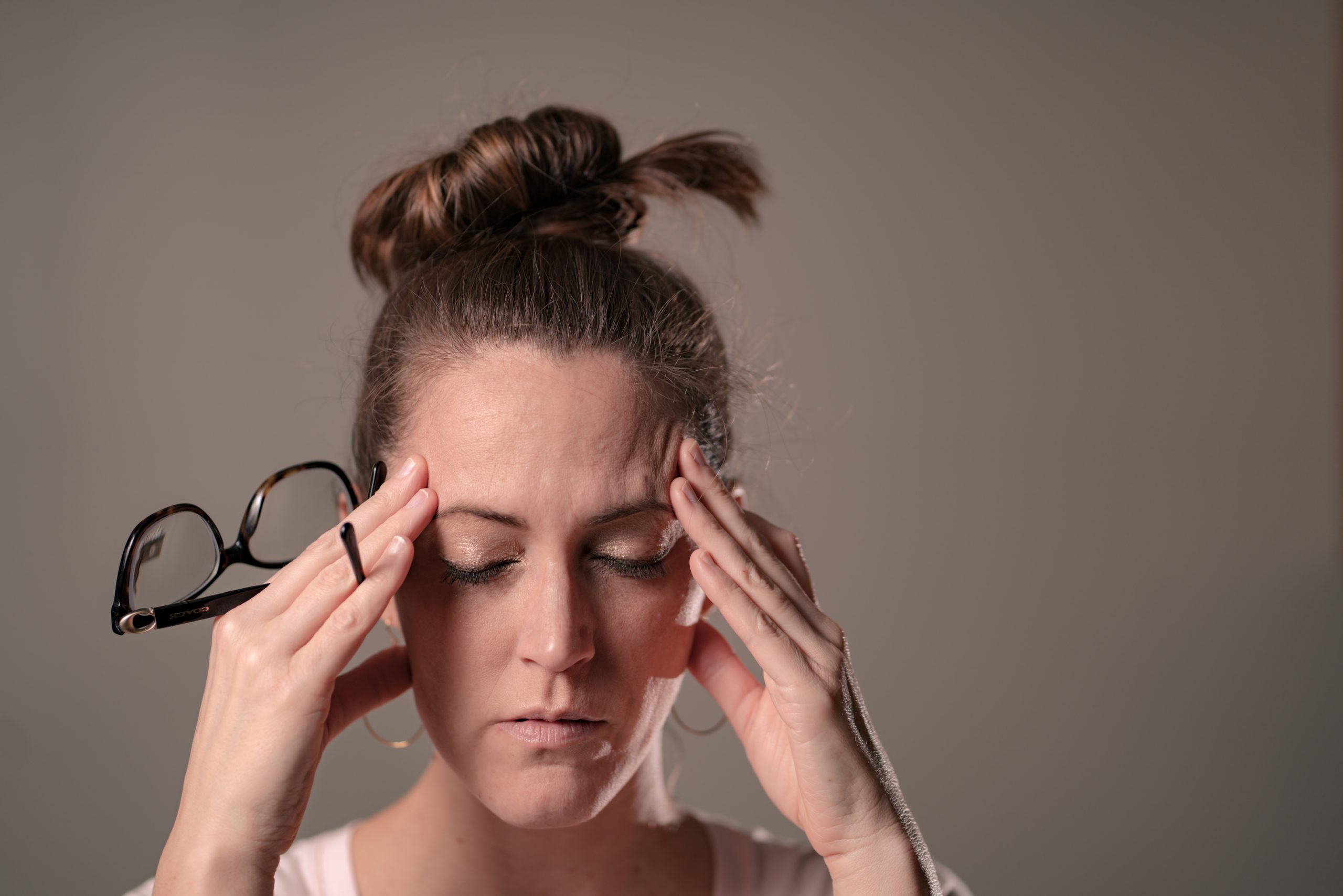 But many drugs can treat or even prevent them. Common migraine treatments include:
But many drugs can treat or even prevent them. Common migraine treatments include:
- Pain relief. Over-the-counter (OTC) drugs often work well. The main ingredients are acetaminophen, aspirin, caffeine, and ibuprofen. Never give aspirin to anyone under the age of 19 because of the risk of Reye’s syndrome. Be careful when you take OTC pain meds because they might also add to a headache. If you use them too much, you can get rebound headaches or become dependent on them. If you take any OTC pain relievers more than 2 days a week, talk to your doctor about prescription drugs that may work better. They may suggest prescription medicines that may work well to end your migraine pain, including triptans, as well as the newer ditans and gepants. Your doctor can tell you if these are right for you.
- Nausea medicine. Your doctor can prescribe medication if you get nausea with your migraine.
- Triptans. These drugs balance the chemicals in your brain.
 You might get a pill to swallow, tablets you dissolve on your tongue, a nasal spray, or a shot. Examples include almotriptan (Axert), eletriptan (Relpax), rizatriptan (Maxalt), sumatriptan (Imitrex), and zolmitriptan (Zomig).
You might get a pill to swallow, tablets you dissolve on your tongue, a nasal spray, or a shot. Examples include almotriptan (Axert), eletriptan (Relpax), rizatriptan (Maxalt), sumatriptan (Imitrex), and zolmitriptan (Zomig). - Ergotamine (Cafergot, Ergomar, Migergot). This also works on the chemicals in your brain.
- Lasmiditan (Reyvow). This drug eases pain, nausea, and sensitivity to light or sound.
- CGRP receptor antagonists. Your doctor might give you rimegepant (Nurtec) or ubrogepant (Ubrelvy) if other treatments don’t help.
- Preventive medicines. If other treatments don’t work, your headaches are severe, or you have four or more migraine days a month, your doctor may suggest these. You take them regularly to make your headaches less severe or frequent. They include seizure medicines, blood pressure medicines (like beta-blockers and calcium channel blockers), some antidepressants, and shots of botulinum toxin type A (Botox).
 CGRP antagonists such as atogepant (Qulipta), eptinezumab (Vyepti), erenumab (Aimovig), fremanezumab (Ajovy), and galcanezumab (Emgality) can also prevent migraines.
CGRP antagonists such as atogepant (Qulipta), eptinezumab (Vyepti), erenumab (Aimovig), fremanezumab (Ajovy), and galcanezumab (Emgality) can also prevent migraines. - Single-pulse transcranial magnetic stimulation (sTMS). You place this device on the back of your head at the start of a migraine with aura. It sends a pulse of magnetic energy to part of your brain, which may stop or reduce pain.
- Neuromodulation devices. Other devices can affect the vagus nerve and the trigeminal nerve to give relief from or prevent migraines.
Home remedies
You may ease migraine symptoms by:
- Resting with your eyes closed in a dark, quiet room
- Putting a cool compress or ice pack on your forehead
- Drinking plenty of liquids
Complementary and alternative treatments
Some people get relief with therapies they use in addition to or instead of traditional medical treatment. These are called complementary or alternative treatments. For migraine, they include:
These are called complementary or alternative treatments. For migraine, they include:
- Biofeedback. This helps you take note of stressful situations that could trigger symptoms. If the headache begins slowly, biofeedback can stop the attack before it becomes full-blown.
- Cognitive behavioral therapy (CBT). A specialist can teach you how actions and thoughts affect how you sense pain.
- Supplements. Research has found that some vitamins, minerals, and herbs can prevent or treat migraines. These include riboflavin, coenzyme Q10, and melatonin. Butterbur may head off migraines, but it can also affect your liver enzymes.
- Body work. Physical treatments like chiropractic, massage, acupressure, acupuncture, and craniosacral therapy might ease headache symptoms.
Talk to your doctor before trying any complementary or alternative treatments.
Try these steps to prevent symptoms:
- Identify and avoid triggers. Keep track of your symptom patterns in a diary so you can figure out what’s causing them.
- Manage stress. Relaxation techniques like meditation, yoga, and mindful breathing can help.
- Eat on a regular schedule.
- Drink lots of fluids.
- Get plenty of rest.
- Get regular moderate exercise.
- Ask your doctor about preventive medicines if you get migraines around your period or if lifestyle changes don’t help.
Some new devices can also prevent migraine. Cefaly is a headband-like gadget that sends electrical pulses through the skin of your forehead. It affects your trigeminal nerve, which is linked with migraine headaches. You use Cefaly once a day for 20 minutes. When it’s on, you’ll feel a tingling or massaging sensation. Another stimulator, gammaCore, sends out a mild electrical signal to the fibers of the vagus nerve in your neck to relieve pain and help prevent migraine.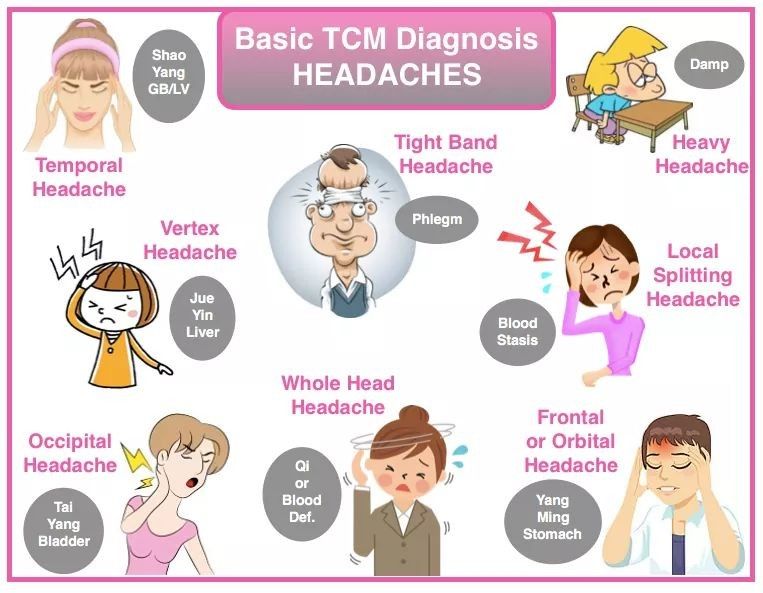
Top Picks
Headache in the morning: advice from a neurologist
There are many reasons for morning headaches: from uncomfortable pillows and stuffiness in the room to snoring, depression or serious problems with the heart and blood vessels. How not to miss the warning signs? And which specialist to contact in the first place?
All articles
Why does pain occur?
A headache in the morning does not necessarily signal danger.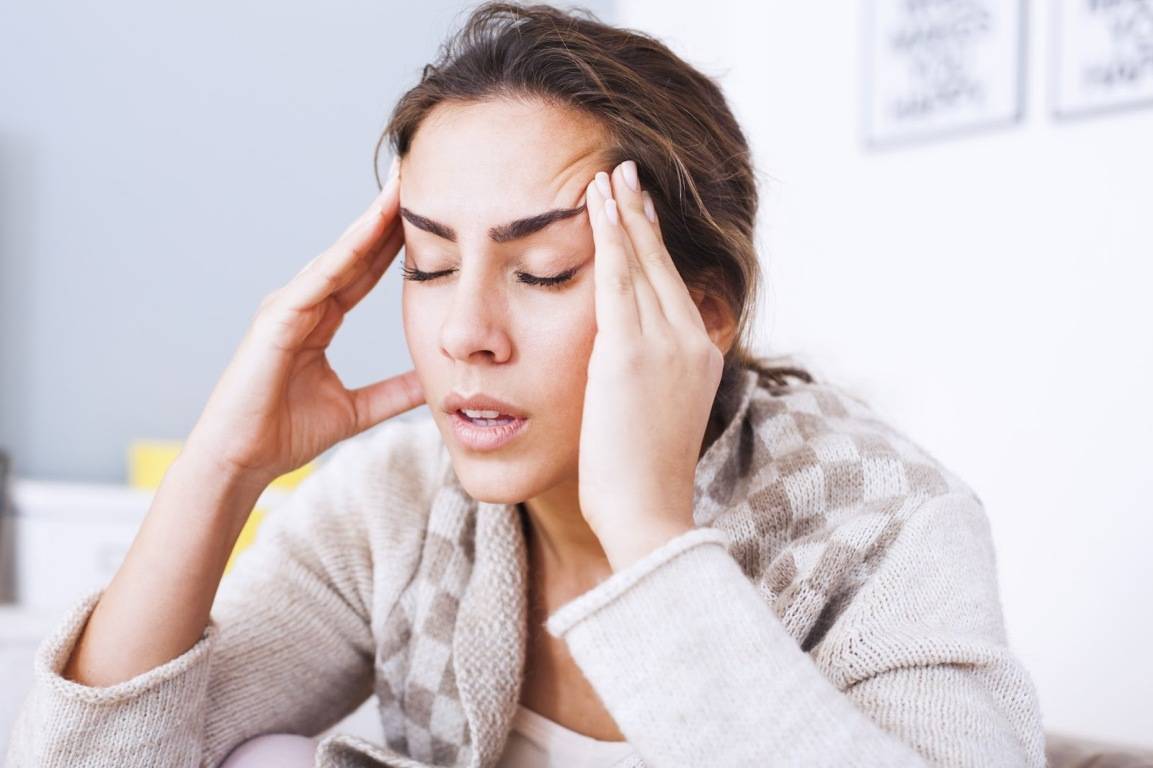 The reasons may be external, including sleeping in an uncomfortable position or drinking alcohol the night before. Therefore, the first advice is to create optimal conditions for a night’s rest.
The reasons may be external, including sleeping in an uncomfortable position or drinking alcohol the night before. Therefore, the first advice is to create optimal conditions for a night’s rest.
Adjust mode. A common cause of morning sickness is a banal lack of sleep. To recover, the body needs 7-8 hours of sleep per day. Excess sleep is also harmful: an extra couple of hours in bed will not add vigor – but it can provoke a headache.
Review habits. Before going to bed, it is better to refuse heavy, fatty and salty foods, not to drink too much liquid and not to abuse alcohol. All this is fraught with edema and even intoxication of the body. Sometimes the head may ache from hunger or sudden changes in diet. For example, if you decide to give up coffee, it is better not to quit in one day, but to reduce the number of cups gradually.
Arrange a bed. If you sleep in an uncomfortable position, the vertebral arteries are pinched, blood circulation in the head and neck is disturbed. Because of this, heaviness and stiffness appear in the morning: the temple, forehead or neck usually hurts on one side.
Because of this, heaviness and stiffness appear in the morning: the temple, forehead or neck usually hurts on one side.
Ventilate the room before going to bed. Often the head hurts in the morning due to oxygen starvation of the brain. The main thing here is not to overdo it and not to sleep in a draft.
When is it time to see a doctor?
It is important not to self-medicate and seek help if:
headache began to disturb more often;
the nature, place or intensity of pain has changed;
taking a regular pain reliever does not help.
For example, a headache caused by overexertion can last up to three days. You can take painkillers on your own, but if after 2-3 days there is no effect, be sure to consult a doctor.
Remember that the cause of morning pain can be high blood pressure, taking certain medications, low endorphins, depression, sleep apnea – stopping breathing during sleep. Sometimes patients have serious disorders: neoplasms in the brain, aneurysms and other vascular pathologies, autoimmune diseases.
Sometimes patients have serious disorders: neoplasms in the brain, aneurysms and other vascular pathologies, autoimmune diseases.
See a doctor as soon as possible if you have had a head injury. Or if, in addition to a headache, there is one or more accompanying symptoms: high fever, dizziness, nausea and vomiting, convulsions, shortness of breath; if there is double vision, the pain increases sharply or radiates to the neck.
Which specialist should I contact?
With headaches, most often they go immediately to a neurologist, and rightly so. The doctor will conduct an examination, collect an anamnesis, ask clarifying questions. And in most cases, already at the time of admission, he will make a preliminary diagnosis and prescribe treatment.
Yes, the reason may not be from the field of neurology – this happens quite often. If your head hurts due to problems with pressure, you will need to consult a therapist or cardiologist. With palpitations and sweating, it is important to exclude endocrine disorders. And if there is a suspicion of sinusitis or sinusitis, a neurologist will refer you to an ENT doctor.
And if there is a suspicion of sinusitis or sinusitis, a neurologist will refer you to an ENT doctor.
All articles
Our doctors
All specialists
Samoilova Olga Borisovna
Deputy chief physician for examination of temporary disability, neurologist, candidate of medical sciences, highest category
Geniatov Vadim Rustemovich
Neurologist
Popova Anastasia Sergeevna
Neurologist
Lovtsova Tatyana Sergeevna
Neurologist, First category
Mustafina Dilyara Vakhitovna
Neurologist
Zaiko Maria Fedorovna
Neurologist
Rechkalova Olga Petrovna
Neurologist
Drobinina Olga Aleksandrovna
Neurologist, first category
Telezhinskaya Irina Mikhailovna
Pediatric neurologist
Lyudmila Alekseevna Kochetova
Neurologist, highest category
Orishich Yuliya Petrovna
Neurologist, Candidate of Medical Sciences, highest category
Kuznetsova Olga Yurievna
Doctor of functional diagnostics, the highest category
Makodzeba Olga Alexandrovna
Neurologist, epileptologist, neurophysiologist, doctor of integrative medicine, highest category
Zaryada Anna Andreevna
Neurologist
Larina Tatyana Anatolyevna
Neurologist
How to get rid of persistent headaches: tips and tricks
Contents
- 1 How to get rid of persistent headaches: effective measures and tips
- 1.
 1 How to get rid of persistent headaches
1 How to get rid of persistent headaches - 1.2 Why headaches occur
- 1.3 Factors that can make a headache worse
- 1.4 Simple neck and shoulder exercises
- 1.5 Meditation and deep breathing
- 1.6 Avoid certain foods
- 1.7 Massage techniques to reduce pain
- 1.8 Vitamin D: Essential for Head Health and body
- 1.9 Regular exercise and good posture
- 1.10 Seek medical attention when needed
- 1.11 Strategies to prevent recurrence of pain
- 1.12 Related videos:
- 1.13 Q&A:
- 1.13.0.1 What causes a persistent headache?
- 1.13.0.2 Can lack of sleep cause persistent headaches?
- 1.13.0.3 What is the treatment for persistent headaches?
- 1.13.0.4 What muscle exercises help get rid of headaches?
- 1.13.0.5 What foods should be excluded from the diet for persistent headache?
- 1.13.0.6 What role does sleep hygiene play in headache prevention?
- 1.
If you suffer from constant headaches, the article on our website will help you understand the causes of pain and give advice on how to eliminate them. Learn how to change your lifestyle and habits so you don’t suffer from headaches every day.
Learn how to change your lifestyle and habits so you don’t suffer from headaches every day.
Headache is one of the most common problems we face in everyday life. A persistent headache can affect our productivity, mood, and general well-being. Often we turn to analgesics to relieve pain, but this is not always the best solution.
In this article, we’ll look at some helpful tips and tricks that can help you get rid of a persistent headache without having to take medication all the time. We will look at the various causes that can cause headaches, and also offer several ways to help reduce its occurrence and frequency.
If you suffer from a constant headache and are looking for ways to relieve it or, at best, get rid of it, then this material is for you. Let’s look at the causes that lead to headaches and what we can do to deal with this unpleasant condition.
How to get rid of a constant headache
Headache is one of the most common ailments of a modern person, along with colds.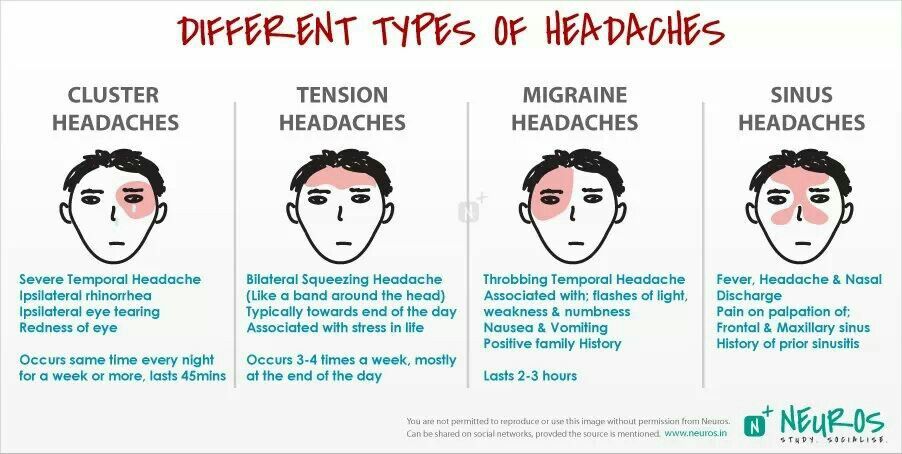 Almost everyone suffers from it from time to time, but what if a headache occurs constantly and becomes a real embarrassment in everyday life?
Almost everyone suffers from it from time to time, but what if a headache occurs constantly and becomes a real embarrassment in everyday life?
- Check your posture. Incorrect posture can cause not only back pain, but also increase the likelihood of headaches. Try to keep your back straight and sit properly at the computer.
- Watch your diet. Some foods may cause headaches, such as foods that are too fatty or salty. You can try eliminating them from your diet and see how it affects your well-being.
- Pay attention to physical activity. Lack of movement can impair circulation and cause headaches. Go for walks, yoga or swimming. The main thing is to choose a suitable sport for yourself and practice it regularly.
If a few simple tips do not help you get rid of your constant headache, be sure to consult a doctor. He will diagnose and prescribe the necessary treatment, which will allow you to get rid of pain and return to a full life.
Why headaches occur
Headaches can have many causes and manifest themselves in many different ways. One of the common causes is muscle tension in the occipital and cervical region, which causes discomfort and pain. This may be due to prolonged sedentary work at the computer, frequent overloads or poor posture.
Some types of headaches may be related to environmental factors, such as changes in the weather, bright lights or loud noises. Other causes may include allergic reactions, depression, hormonal changes, and head trauma.
In cases where the headache becomes frequent and distressing, it is important to seek the help of a physician who can identify the cause and recommend appropriate treatment.
Factors that may increase headache
Headache can occur for various reasons, but some factors can make it worse:
- Stress . Psychological problems, experiences, conflicts at work or in the family can cause a headache.
 The level of stress in the body is directly related to the appearance of a headache.
The level of stress in the body is directly related to the appearance of a headache. - Negative effects on vision . Increased stress on the eyes in low light conditions or when working at a computer can lead to muscle tension in the eye and neck, as well as headaches.
- Wrong way of life . Lack of physical activity, unhealthy diet, lack of sleep, and drinking alcohol can also increase your chance of getting a headache.
- Weather sensitivity . Changing weather conditions can make people with chronic headaches, including migraines, worse.
To avoid worsening headaches, you need to follow the rules of a healthy lifestyle, exercise regularly, avoid stressful situations and control nutrition. If the headache occurs regularly, be sure to consult a doctor.
Simple exercises for the neck and shoulders
Headaches can be caused not only by stress and fatigue, but also by tension in the neck and shoulders.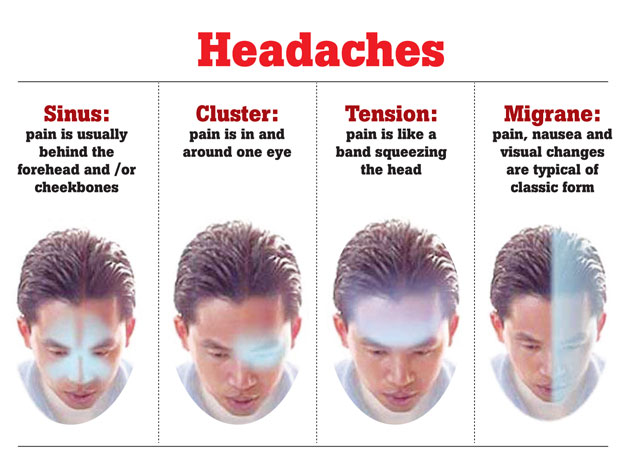 A few simple exercises can help relax these muscles and prevent pain.
A few simple exercises can help relax these muscles and prevent pain.
- Head tilts to the right and left. Sit up straight, lower your shoulders, then slowly tilt your head to the right, feeling a stretch in the left side of your neck. Hold this position for a few seconds and return to the starting position. Repeat the same on the left side. Repeat the exercise 5 times on each side.
- Head rotation. Sit up straight, lower your shoulders, then slowly turn your head to the right, trying to reach your shoulder with your ear. Hold this position for a few seconds and return to the starting position. Repeat the exercise on the left side. Repeat the exercise 5 times on each side.
- Shoulder raises. Sit up straight with your arms at your sides. Then slowly lift your shoulders towards your ears without straining your neck. Hold this position for a few seconds and lower your shoulders back to the starting position.
 Repeat the exercise 10 times.
Repeat the exercise 10 times.
These exercises can help relieve tension in the neck and shoulders, improve blood circulation in the area, and prevent headaches. But if the pain persists, or if you suffer from chronic pain, see your doctor to determine and treat the cause.
Meditation and deep breathing
Meditation and deep breathing are effective ways to relieve headaches. Meditation helps to reduce stress and tension, while deep breathing improves blood circulation and reduces pressure in the vessels of the brain.
For meditation, you can choose a quiet place, sit in a comfortable position and close your eyes. Focus on your breathing and let your thoughts go. Repeat in your mind a mantra or phrase that you like to stay in the present moment.
Deep breathing can be done in any situation. Inhale completely through your nose, hold your breath for a few seconds, and exhale slowly through your mouth. Do this several times to improve blood circulation and relieve tension.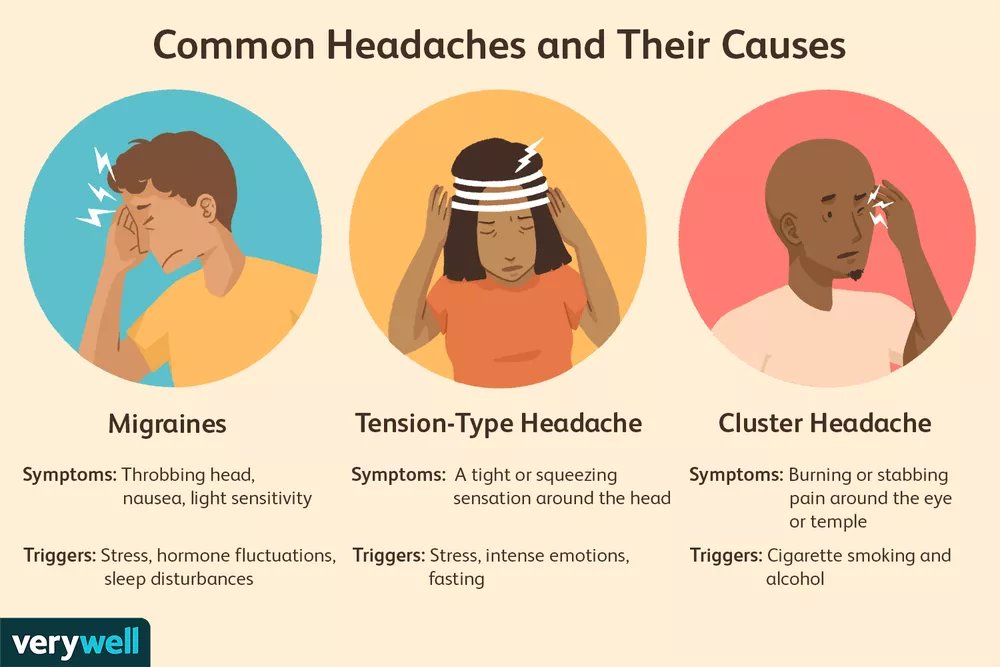
- Meditation and deep breathing can be ideal ways to relieve headaches.
- Spend time in a quiet place and focus on your breathing to reduce stress and tension.
- Breathe deeply in any situation to improve circulation and relieve tension.
Avoid certain foods
One of the causes of headaches is poor nutrition. Therefore, if you suffer from frequent headaches, then you should pay attention to your diet and exclude certain foods from it:
- Coffee and tea. The caffeine and theine they contain may cause headaches in some people. If you can’t stop drinking coffee or tea, try lowering your dosage or replacing drinks with herbal teas.
- Salty and fatty foods. They contribute to the formation of headaches and may worsen them. Try to reduce the amount of salt in your diet and avoid fatty foods.
- Dairy products. Some people find it difficult to digest dairy products, which can lead to headaches.
 You can try replacing dairy products with other sources of calcium, such as leafy green vegetables, seeds, and chicken eggs.
You can try replacing dairy products with other sources of calcium, such as leafy green vegetables, seeds, and chicken eggs.
However, it is worth remembering that each organism is individual, so it is better to consult a doctor before eliminating foods from the diet.
Massage Techniques for Pain Relief
Massage can significantly improve headaches, help you relax and improve blood circulation. There are several massage techniques that can be used to relieve pain:
- Neck and Shoulder Massage: Start the massage from the neck, kneading the neck muscles in a circular motion. Then go to the shoulders, massaging them with light strokes;
- Temple massage: Apply a small amount of oil or cream to the temples and massage the area with your fingers in a circular motion. This massage can significantly reduce pain;
- Massage of the point between the thumb and forefinger: This point is called the cubital fossa point.
 Find it and massage it with your fingers for 2-3 minutes;
Find it and massage it with your fingers for 2-3 minutes; - Temporal Bone Massage: Apply light pressure to the soft tissue above the temporal bones, using light strokes to massage the area;
Massage can work in a mysterious way, and sometimes it is enough to reduce headaches, improve mood and harmonize emotions. If you have a persistent headache, try using these massage techniques to relieve symptoms.
Vitamin D: an essential element for the health of the head and body
Vitamin D is one of the most important elements that most people lack in our time. It is responsible for many processes in the body, one of which is maintaining bone health.
Vitamin D deficiency can lead to poor mental health, including depression and anxiety, which in turn can cause headache symptoms.
Getting enough vitamin D can be ensured by increasing the intake of foods such as oily fish and eggs, as well as regular sun exposure. If the lack of a natural way of obtaining vitamin D is not enough, you should consult a specialist and take special supplements.
Thus, providing your body with enough vitamin D will help reduce the risk of chronic headaches, improve mental health, and lead to more favorable overall health.
Regular exercise and good posture
The most important thing in preventing persistent headaches is good posture. If we sit at a computer for a long time or bow our head over a mobile device, we strain the neck and shoulder girdle, which can lead to pain in the head. Therefore, it is important to maintain proper posture and exercise regularly.
Another way to relax the muscles in your neck and shoulders is to do simple physical exercises. For example, you can make rotational movements with your head, turn it in different directions and tilt it back and forth. It is important to monitor the correctness of the exercises and not overstrain the muscles. Exercise should be done regularly, for example, every day for a few minutes.
In general, correct posture and regular exercise will help strengthen the muscles of the neck and shoulders and get rid of constant headaches.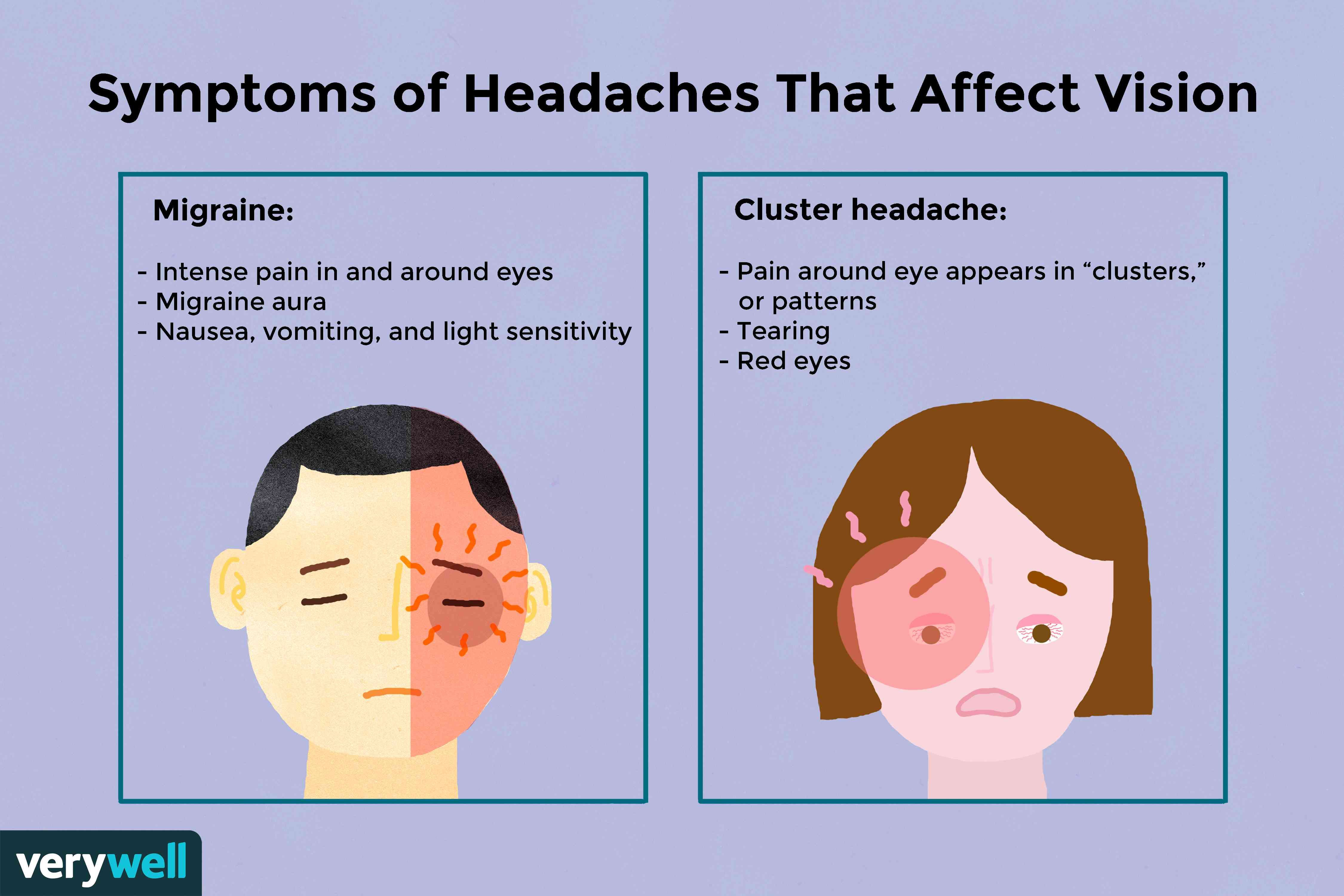 Do not forget that the exercises must be performed correctly, so seek the help of a professional if you are new to this matter.
Do not forget that the exercises must be performed correctly, so seek the help of a professional if you are new to this matter.
Contact a specialist if necessary
Do not forget that if the headache does not go away for a long time, you should consult a doctor. The specialist will diagnose and prescribe the appropriate treatment.
If the headache is accompanied by convulsions, it is also necessary to consult a neurologist. He will help identify the cause of these symptoms and provide appropriate treatment.
For women suffering from migraine, it is necessary to consult a gynecologist, as this may be due to hormonal imbalance.
Never neglect your health. Contact a specialist if necessary and get timely help and prescribed treatment. After all, only a healthy body can fill life with bright colors.
Strategies to prevent recurrence of pain
In addition to treating headaches, steps must be taken to prevent recurrence. The following are helpful tips and tricks to help you avoid headaches:
- Maintain a healthy lifestyle.
 Regular exercise, a healthy diet, and avoiding nicotine and alcohol can reduce the risk of headaches.
Regular exercise, a healthy diet, and avoiding nicotine and alcohol can reduce the risk of headaches. - Organize your working day correctly. Avoid prolonged stay in one position and breaks at work. Remember to regularly rest your eyes, especially when working on a computer.
- Avoid stressful situations. Meditation, yoga, or any other relaxation techniques will help.
- Pay attention to the lighting in the room. Direct light on the eyes can cause headaches.
- Watch the weather. As a rule, changes in atmospheric pressure and air temperature can cause a headache.
If you have a predisposition to headaches, keep the above recommendations in mind and use them regularly. Later, you will feel how your life has become more comfortable and headless.
Related videos:
Q&A:
What are the causes of persistent headache?
The reasons can be different – from chronic fatigue and stress to brain diseases and low blood pressure. Therefore, before starting treatment, it is necessary to be examined by a doctor.
Therefore, before starting treatment, it is necessary to be examined by a doctor.
Can lack of sleep cause persistent headaches?
Yes, often insufficient or irregular sleep can cause persistent headaches. It is recommended to sleep at least 7-8 hours a day and go to bed and wake up at the same time.
What is the treatment for chronic headaches?
Treatment depends on the cause. Sometimes it is enough to drink an anesthetic, and sometimes a course of massage or exercises for the neck and shoulder girdle is required. In some cases, you may need to take medication prescribed by your doctor.
What muscle exercises help get rid of headaches?
Cervical erasing and head rotation exercises, as well as neck and shoulder stretching exercises, help improve blood circulation and relieve muscle tension, which can help relieve headaches.
What foods should be excluded from the diet for persistent headache?
For each organism, the list of such foods may differ, but the most common “provocateurs” are: alcohol, chocolate, spicy and fatty foods, too strong coffee or tea, smoked meats and canned food.


 Four out of five people with migraine have other family members who get them. If one parent has a history of these types of headaches, their child has a 50% chance of getting them. If both parents have them, the risk jumps to 75%.
Four out of five people with migraine have other family members who get them. If one parent has a history of these types of headaches, their child has a 50% chance of getting them. If both parents have them, the risk jumps to 75%.
 It often happens in children and may change into classic migraine headaches over time.
It often happens in children and may change into classic migraine headaches over time. Again, get these symptoms checked out by a doctor right away.
Again, get these symptoms checked out by a doctor right away. You might get a pill to swallow, tablets you dissolve on your tongue, a nasal spray, or a shot. Examples include almotriptan (Axert), eletriptan (Relpax), rizatriptan (Maxalt), sumatriptan (Imitrex), and zolmitriptan (Zomig).
You might get a pill to swallow, tablets you dissolve on your tongue, a nasal spray, or a shot. Examples include almotriptan (Axert), eletriptan (Relpax), rizatriptan (Maxalt), sumatriptan (Imitrex), and zolmitriptan (Zomig). CGRP antagonists such as atogepant (Qulipta), eptinezumab (Vyepti), erenumab (Aimovig), fremanezumab (Ajovy), and galcanezumab (Emgality) can also prevent migraines.
CGRP antagonists such as atogepant (Qulipta), eptinezumab (Vyepti), erenumab (Aimovig), fremanezumab (Ajovy), and galcanezumab (Emgality) can also prevent migraines.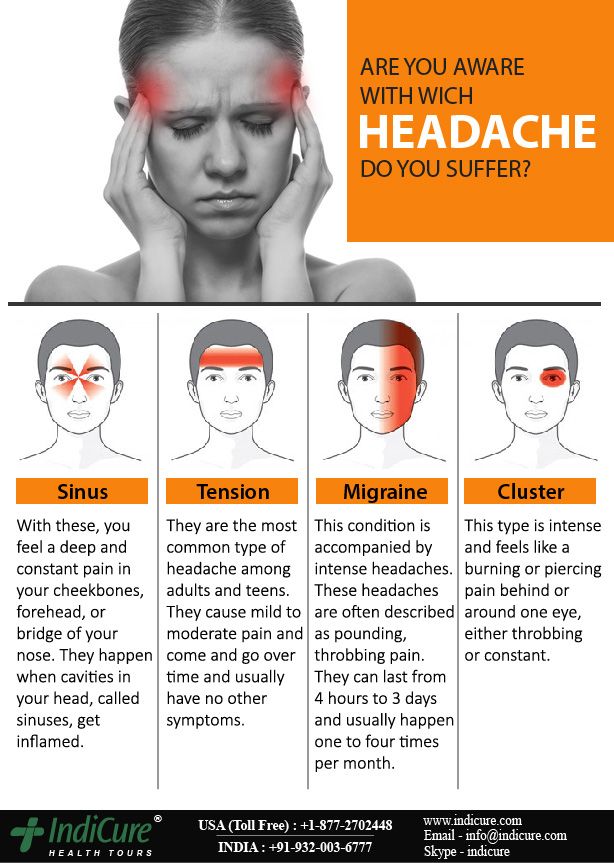 1 How to get rid of persistent headaches
1 How to get rid of persistent headaches The level of stress in the body is directly related to the appearance of a headache.
The level of stress in the body is directly related to the appearance of a headache. Repeat the exercise 10 times.
Repeat the exercise 10 times. You can try replacing dairy products with other sources of calcium, such as leafy green vegetables, seeds, and chicken eggs.
You can try replacing dairy products with other sources of calcium, such as leafy green vegetables, seeds, and chicken eggs. Find it and massage it with your fingers for 2-3 minutes;
Find it and massage it with your fingers for 2-3 minutes; Regular exercise, a healthy diet, and avoiding nicotine and alcohol can reduce the risk of headaches.
Regular exercise, a healthy diet, and avoiding nicotine and alcohol can reduce the risk of headaches.